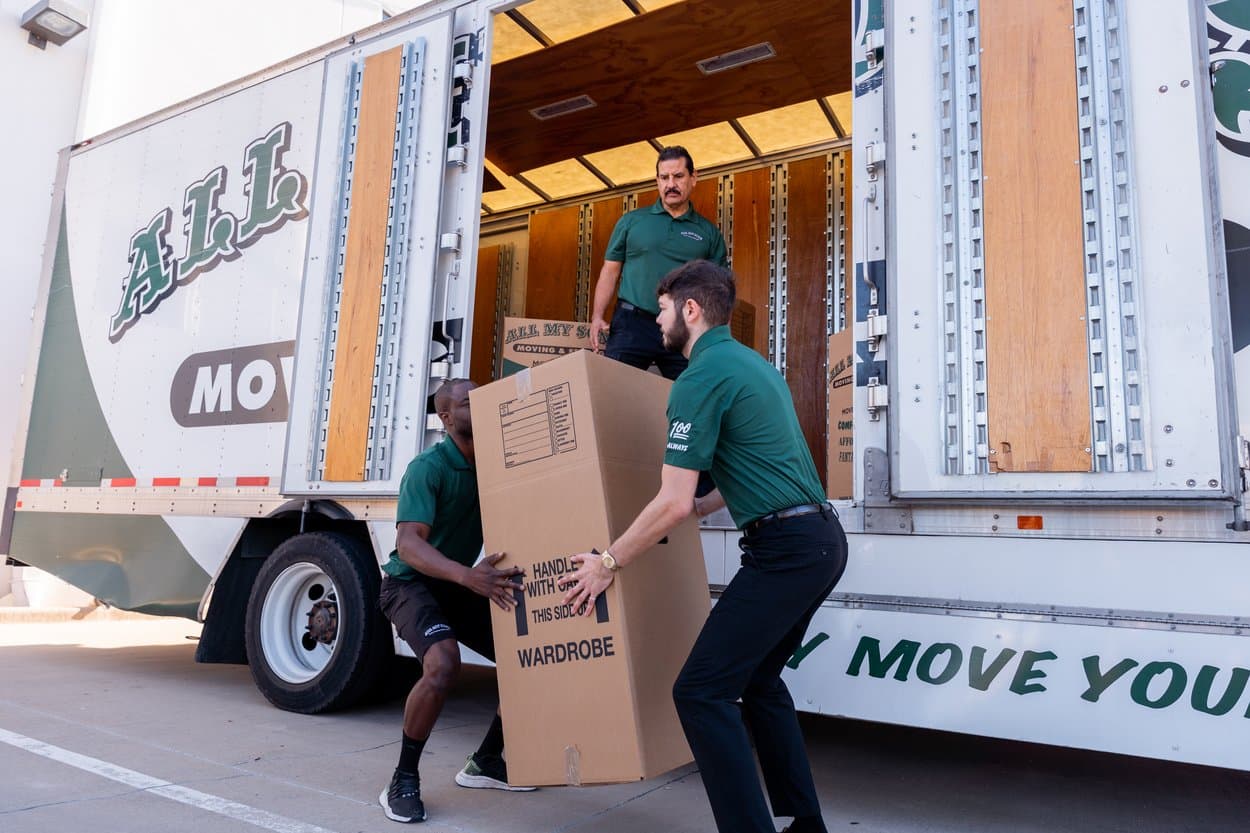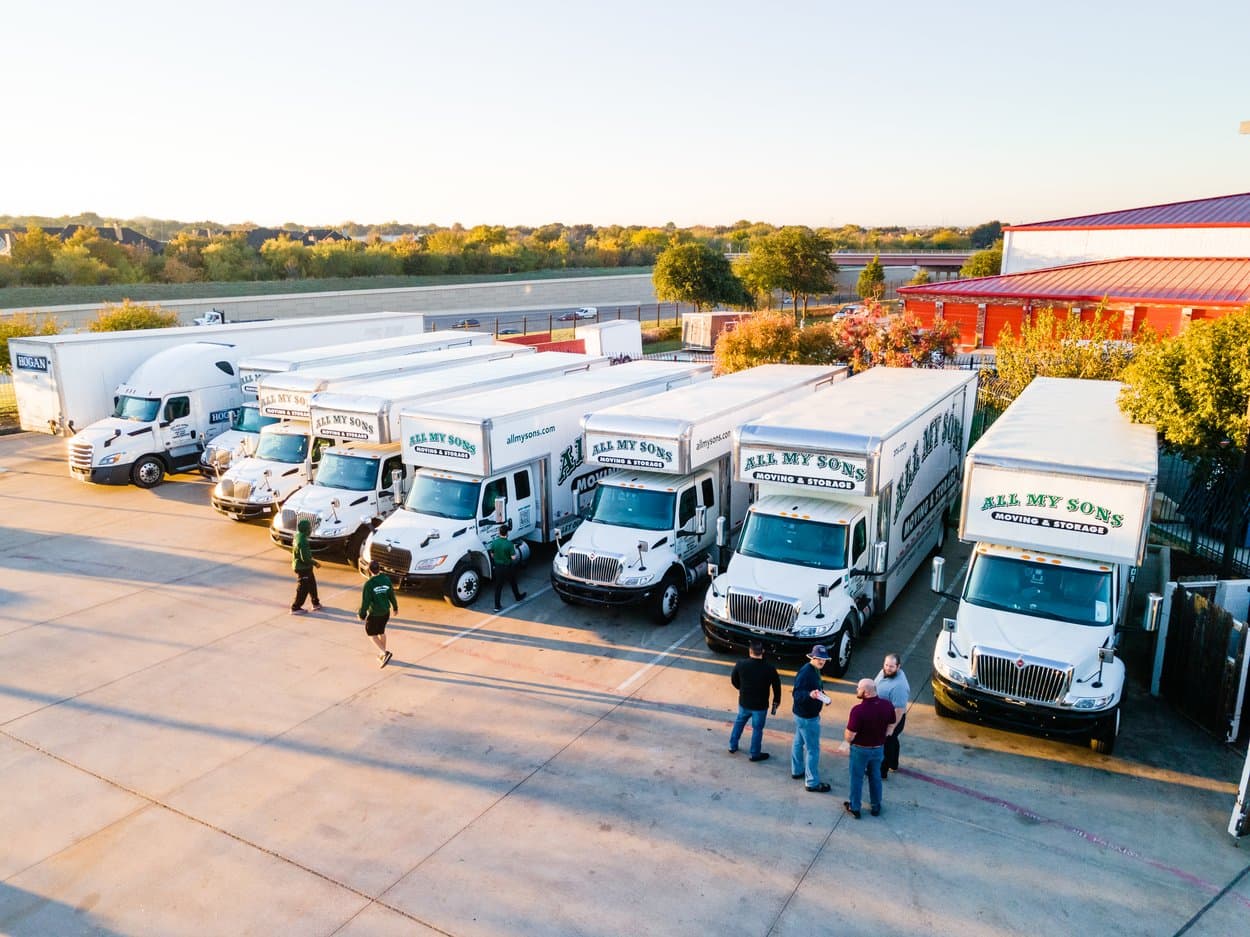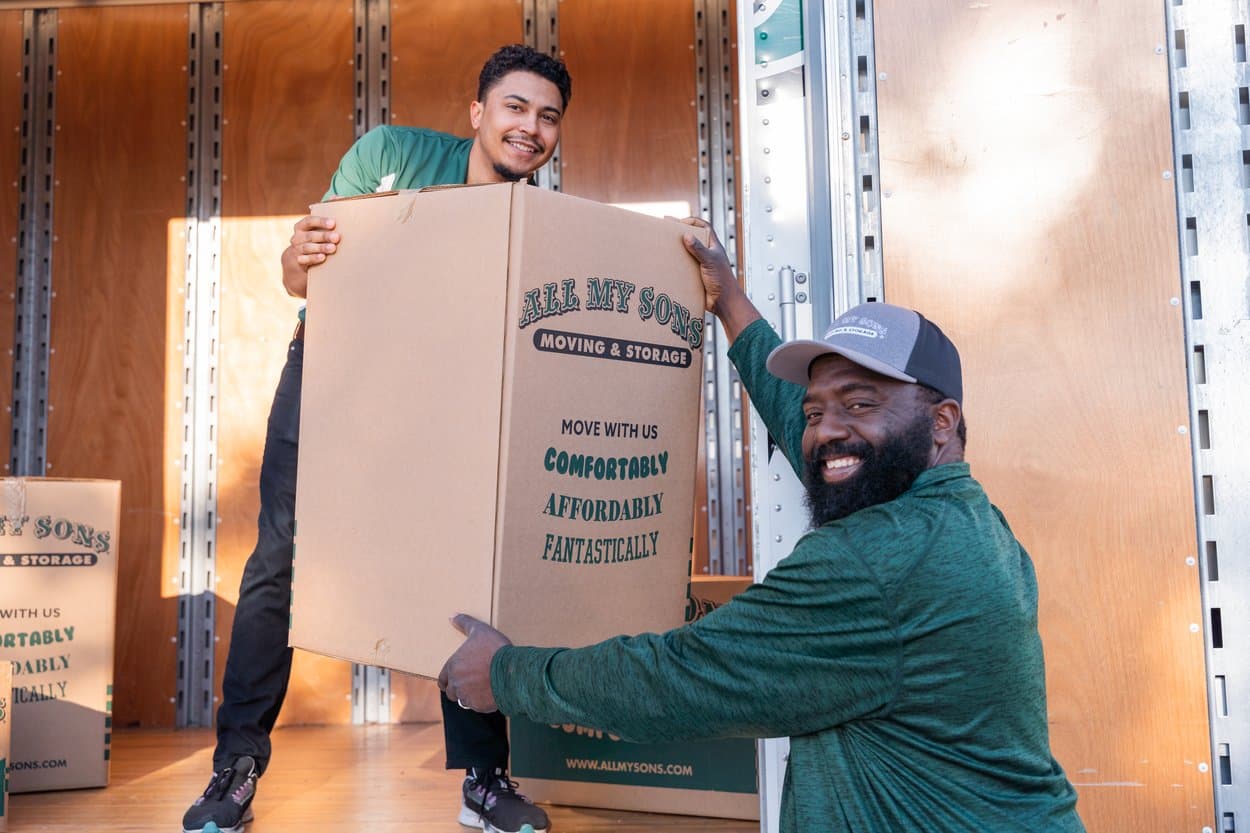Moving? It Might Be Time to Downsize
Downsize your home inventory with tips from All My Sons Moving & Storage including creating a home inventory and calling for junk removal from Junk.com.
As you prepare for a local move, you may be looking around your old home and thinking about shedding the excess clutter that no longer serves you. The process of downsizing enables you to evaluate your belongings and determine what you truly want to keep in your life. With less items to pack, you can reduce moving time and cost as well as minimize stress. Downsizing can help you live a more organized life in your new home, and letting go of what you no longer need or want could be the best way to make a fresh start.
You might be choosing to downsize because of a significant life transition like a divorce, job change, or becoming an empty nester. Maybe you have decided that you simply want less stuff cluttering up your new life after your local move. Whatever your reason for choosing to downsize, the process can feel overwhelming when you first set out to accomplish it.
With these 8 special steps for downsizing before a local move, you can break down the process of downsizing and effectively start your brand-new life in your next home with less clutter.
Step 1: Start Early and Plan Ahead
Depending on the number of things you own and the availability of space in your next house or apartment, downsizing could be a time-consuming process. The longer you live the more likely it is that you have accumulated many sentimental items, and evaluating these items to determine what you will let go of will likely provoke an emotional response. Save yourself the stress and anxiety of waiting until the last minute and begin your downsizing plan as soon as possible.
Before you decide what to bring and what to let go of, be sure to assess how much space you will have in your new home. Measure the rooms, closets, and storage areas in your next house or apartment to determine how much space you have and make sure your larger items will fit. If large furniture items like your couch or bed will not fit in your new space, you will be able to immediately start your list of what to let go of and what essentials will need to be replaced with a smaller item.
Step 2: Create an Inventory
One of the best ways to help evaluate what you have and what you may need to part with is to create a home inventory. With a written home inventory, you can gain a clear understanding of all the items you own, which will make it easier to determine what you need, what you want to keep, and what you can sell, donate, or throw away.
Go room by room through your home and catalogue your items. Start with the large furniture and appliances, and then work your way down to the smaller items like kitchen utensils, clothes, and books. Be sure to make note of the item’s condition, sentimental significance, or monetary value to replace. If the item is particularly valuable, it might be in your best interest to take photos of the item when you add it to your inventory for insurance purposes. Keeping an inventory can also ensure you have a record for your move in case anything is lost, overlooked, or damaged during your transition.
Step 3: Determine Your Essentials
The next crucial step in downsizing is to focus on what you really need and use all the time. Identify the items that are non-negotiable musts, either because you use them often in your daily life or they bring you genuine joy and parting with them is not an option. These items are the essentials that must make the move with you, and everything else you own must take a back seat to make certain your essentials can come.
Some of these essentials will be easy to determine. If you use your blender almost every day, you should keep it to maintain your current lifestyle. Other essentials, like a king-sized bed for example, you might realize that you can and should replace with a smaller version in your new home. In narrowing down your possessions to your absolute musts, you can set the stage for a better, more organized living space in your next house or apartment.
Step 4: Take Things Room by Room
Downsizing might seem like an impossibly long and demanding task if you look at your mountain of material possessions, but the way to accomplish any big chore is to break it down into manageable pieces. Focus on one room at a time and break those rooms down into even smaller sections. If you anticipate downsizing to be an emotionally taxing experience, it might be in your best interest to start with the spaces that contain the least number of sentimental items like a storage bin in the tool shed or a bathroom linen closet.
As you move through the house or apartment, sort your items into three categories:
Keep: These items must serve a distinct purpose or hold extreme personal value. They cannot, or should not, be replaced.
Donate, Sell, or Give Away: These items are in good condition and working order, but you can part with them. You might donate the items to charities, gift them to friends or family who would appreciate them, or sell them for some extra funds if you have the time and the energy to list them online or do a garage sale.
Discard: These are the items that are either not in good condition or would be meaningless to another person. Some possible examples are broken appliances, torn clothing, or old kids’ craft projects you have determined you do not need to preserve.
As you move through the rooms and spaces in your home, you might find that some items are difficult to categorize. This could be because of their sentimental value or because you are not sure whether you will need them after your local move. Here are some questions to ask yourself when you are having difficulty categorizing an item:
How often do I use this item? If you can’t remember the last time you used or looked at an item, or if the answer is that you use it rarely, consider letting it go.
Do I anticipate using this item in the near future? Some items, like holiday decorations, you might not use often but you do anticipate using again at a certain time you can name right now.
How easily is this item replaced? Something that could be bought again without much hassle might be okay to let go of, especially if you have already determined you do not need the item often. An item that is one-of-a-kind, rare, personalized, or irreplaceable gets a point toward the keep pile.
Can I preserve a piece of this item or digitize this item? Items with sentimental value like old kids’ craft projects or items with practical value like important documents might not need to be preserved in their present state. You may be able to save a piece of an item (See Tip 6) or digitize an item (See Tip 7) rather than keep the entire physical object.
What emotions do I feel as I consider this item? Hold or touch the item and think carefully about the emotions and memories that come up. Items that make you happy or invoke valued memories could be items that you keep. You may even choose to preserve items that bring up cathartic or bittersweet emotions. However, an item that invokes no emotions at all is definitely an item you can part with.
Once you have contemplated these questions, your decision about what to do with the item may feel easier to make. Proceed through the rooms in your home, categorizing your items, until you have completed a full evaluation of everything you own.
Step 5: Look for Duplicates
Over time, you may have acquired multiples of certain items like kitchen utensils, electronic gadgets, or tools. When you discover that you have more than one of a certain type of item, ask yourself if you need the extras. In most cases, one well-maintained item will serve its purpose and the other duplicate items can be added to your donate, sell, or give away stash. This shall lighten your load for the move and ensure that you have space for your necessary items.
While you look at duplicates, consider letting go of highly similar items. If you have ten pairs of jeans that are all the same style and you don’t go through them all before laundry day, you can donate some of them and simplify your closet organization in your next home. Chances are, you don’t need ten sets of floral bath towels, no matter how beautiful they are individually. Choose your favorites, select any spares if necessary, and then add the rest to your donate, sell, or give away pile.
Step 6: Preserve Pieces of Sentimental Items
Part of the difficulty in downsizing is the sentimental value of certain items. For example, your child might be fully grown and thoroughly embarrassed when they see the old clay dinosaur sculpture they made at age four, but for you this sculpture represents a treasured memory. Sentimental items will be the hardest to part with, even though it is important to be selective when you are choosing to downsize.
Consider finding creative ways to preserve the items that hold special memories. Old t-shirts that may never be worn again might make a fun quilt. Assorted pieces of kids’ art projects could be arranged in a scrapbook. If you are someone who loves a DIY craft, you may choose to break apart old items of sentimental value and upcycle them into something entirely new.
Remember, your time and energy are limited. While you are appraising your sentimental items be sure to ask yourself if or when you will have the space and motivation to take on a preservation project. The answer to that question will help you determine if you continue with the preservation project or choose another outcome for the item.
Step 7: Digitize When Possible
One smart strategy for downsizing is using the power of digitization to make bulky items turn into easily storable and searchable files. Cut the physical clutter of old photo albums, documents, and even home media collections by putting these items on a hard drive or online cloud. If you have many items to digitize, you might consider investing in a good scanner or hiring a company that can digitize your items in bulk. Once your items are safe in their new digital form, you can discard or shred the original physical objects.
While there are downsides and risks associated with keeping items in a digital form, your items might be safer in an online cloud than they are in physical storage. If a disaster happened, such as a flood or a fire, your physical items might be permanently destroyed. In an online cloud, you have security and peace of mind that your items will be accessible again even if something should happen to your new home.
Step 8: Use a Junk Removal Company
Unfortunately, some things you have might well and truly be junk. This might be the couch your pet has torn to shreds, the busted washer you have sitting in the garage, or the smelly mattress that has taken up residence in your attic. You will not be able to beg a friend or family member to take this item and donating it to a charity might be rude. When letting go is easy but the trash can is just too small, consider getting in touch with a junk removal company.
Junk removal companies also come in handy when you are working under the hard deadline of your move date. If you know you need to get rid of your entire basement stash and you are running out of time, then junk removal is the way to go. You call them up, they come get your bulk items, and then those items are out of your hair. A junk removal company can appraise your items to determine what can potentially get recycled and what is sadly destined for the landfill.
Junk.com offers same-day junk removal including property cleanouts. Junk.com will haul away old furniture, appliances, scrap metal, electronics, and more. Book now to get a team out to appraise your junk.
All Done Downsizing: Your Fresh Start Awaits
Now that you have come to the end of your downsizing journey, you can prepare for your local move knowing that what you have chosen to keep will help you live a simpler, more organized, and less cluttered life. With the essentials cataloged and the junk safely carted away, you can focus on moving into your new home.
When you’re ready to make a stress-free local move after downsizing, consider contacting All My Sons Moving & Storage to help take care of all your moving needs. As a full-service moving company, we can handle everything from the packing to the heavy lifting. We specialize in local moves and understand the needs of our customers who are downsizing. Get a free quote to start your local move and get ready to embark on your fresh start.
Quick Moving Tips

How to Pack Clothes for a Move
All My Sons Moving & Storage provides professional packing services and has some special tips for packing your clothing for moving.

How to Make a Seamless Business Move
Tips for pulling off your business move from the experts in commercial moving services at All My Sons Moving & Storage.

How to Pack a Computer for a Move
Here are 5 steps that should help you get your computer secured for the move.


